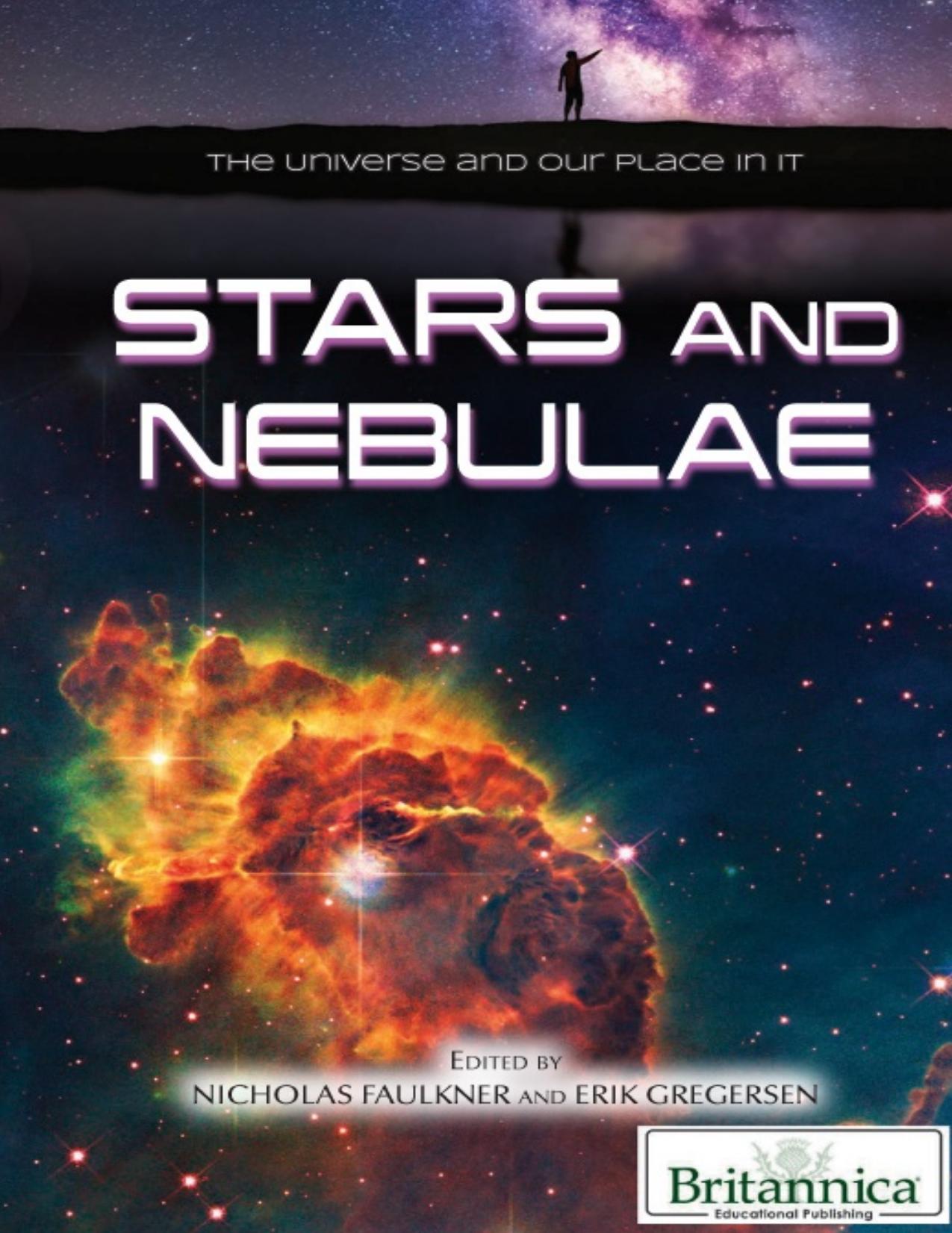Stars and Nebulae by Nicholas Faulkner

Author:Nicholas Faulkner
Language: eng
Format: epub, pdf
Publisher: Britannica Educational Publishing
FINDING CLUSTERS IN EXTERNAL GALAXIES
Clusters have been discovered and studied in many external galaxies, particularly members of the Local Group (a group of about 50 stellar systems to which the Galaxy belongs). At their great distances classification is difficult, but it has been accomplished from studies of the colours of the light from an entire cluster (integrated colours) or, for relatively few, from colour-magnitude diagrams.
Infant stars in the Small Magellanic Cloud.
Clusters have been found by the hundreds in some of the nearest galaxies. At the distance of the Magellanic Clouds, a cluster like the Pleiades would appear as a faint 15th-magnitude object, subtending 15 seconds of arc instead of several degrees. Nevertheless, it is estimated that the Small Magellanic Cloud, at a distance of 200,000 light-years, contains about 2,000 open clusters. In the Large Magellanic Cloud, at a distance of 163,000 light-years, over 1,200 of an estimated 4,200 have been cataloged. Most of them are young blue-giant open clusters such as NGC 330 and NGC 1866. The open clusters contain some Cepheid variables and in chemical composition are similar to, but not exactly the same as, those of the Galaxy. The globular clusters fall into two distinct groups. Those of the first group, the red, have a large metal deficiency similar to the globular clusters in the Galaxy, and some are known to contain RR Lyrae variables. The globular clusters of the second group are large and circular in outline, with colours much bluer than normal galactic globular clusters and with ages of about one million to one billion years. They are similar to the open clusters of the Magellanic Clouds but are very populous. The observed differences between clusters in the Galaxy and the Magellanic Clouds result from small differences in helium or heavy-element abundances. There are at least 122 associations with a mean diameter of 250 light-years, somewhat richer and larger than in the Galaxy. Sixteen of the associations contain coexistent clusters. Also, 15 star clouds (aggregations of many thousands of stars dispersed over hundreds or even thousands of light-years) are recognized.
In the great Andromeda spiral galaxy (M31) some 2.2 million light-years away, about 400 globular clusters are known. Colour studies of some of these clusters reveal that they have a higher metal content than globular clusters of the galaxy. Nearly 200 OB associations are known, with distances up to 80,000 light-years from the nucleus. The diameters of their dense cores are comparable to those of galactic associations. NGC 206 (OB 78) is the richest star cloud in M31, having a total mass of 200,000 suns and bearing a strong resemblance to the double cluster in Perseus. Some globular clusters have been found around the dwarf elliptical companions to M31, NGC 185, and NGC 205.
M33 in the constellation Triangulumâa spiral galaxy with thick, loose arms (an Sc system in the Hubble classification scheme)âhas about 300 known clusters, not many of which have globular characteristics. Of the six dwarf spheroidal galaxies in the Local Group, only the one in the constellation Fornax has clusters.
Download
This site does not store any files on its server. We only index and link to content provided by other sites. Please contact the content providers to delete copyright contents if any and email us, we'll remove relevant links or contents immediately.
Pale Blue Dot by Carl Sagan(4886)
Cracking the GRE Premium Edition with 6 Practice Tests, 2015 (Graduate School Test Preparation) by Princeton Review(4202)
Pocahontas by Joseph Bruchac(4166)
Unfiltered by Lily Collins(3942)
The Emotionary: A Dictionary of Words That Don't Exist for Feelings That Do by Eden Sher(3299)
The Daily Stoic by Holiday Ryan & Hanselman Stephen(3213)
Factfulness_Ten Reasons We're Wrong About the World_and Why Things Are Better Than You Think by Hans Rosling(3185)
The President Has Been Shot!": The Assassination of John F. Kennedy by Swanson James L(3034)
The 48 laws of power by Robert Greene & Joost Elffers(2986)
Sapiens and Homo Deus by Yuval Noah Harari(2968)
Rogue Trader by Leeson Nick(2960)
The Innovators: How a Group of Hackers, Geniuses, and Geeks Created the Digital Revolution by Walter Isaacson(2768)
The Rape Of Nanking by Iris Chang(2763)
Gettysburg by Iain C. Martin(2704)
Almost Adulting by Arden Rose(2641)
The Plant Paradox by Dr. Steven R. Gundry M.D(2528)
500 Must-Know AP Microeconomics/Macroeconomics Questions(2519)
In the Woods by Tana French(2518)
Make by Mike Westerfield(2273)
